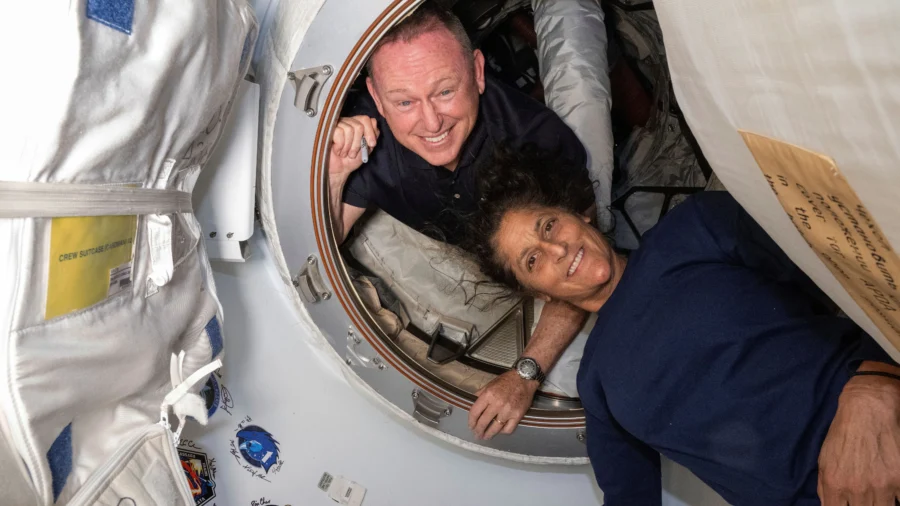NASA astronauts Butch Wilmore and Sunita “Suni” Williams plan to cast their 2024 election votes from space after problems were found with Boeing’s new Starliner, pushing their return to Earth until 2025.
In June, Wilmore and Williams launched aboard the spacecraft for its first test flight on a week-long mission to the International Space Station (ISS). However, NASA later determined it was too risky to use for their return to Earth.
Despite the extended time in space, they will still have the opportunity to vote.
“I sent down my request for a ballot today, and they should get it to us in a couple of days,” Wilmore said at a press conference from the ISS. “It’s a very important role that we all play as citizens to be included in those elections, and NASA makes it very easy for us to do that.”
A law passed by the Texas Legislature in 1997 allows astronauts to vote absentee while orbiting Earth.
The Texas Election Code states that “a person who meets the eligibility requirements of a voter… but who will be on a space flight during the early-voting period and on election day.” can vote.
The very year the law was passed, NASA astronaut David Wolf became the first American to vote in space during a four-month mission on Russia’s Mir Space Station.
Since, astronauts who have been in orbit have had the option to cast ballots from space.
The process is surprisingly straightforward. Once astronauts fill out their ballots, they are transmitted back to Earth as encrypted files, similar to a secure email attachment. Each astronaut can access their ballot through a unique password.
The ballots are beamed back to Earth using the same method that most data is transferred between the space station and mission control. According to NASA, this is achieved through their Near Space Network, a system of satellites that transmit data back to Earth using ground-based antennas.
After completing their electronic absentee ballots, Wilmore and Williams’ encrypted forms will be uploaded to the ISS’s computer system and transmitted securely back to Earth, according to NASA.
The ballots are first transmitted to a ground station at NASA’s White Sands Test Facility in Las Cruces, New Mexico. From there, they are securely transferred to the control room in Houston and then sent to the county clerk responsible for processing.
The ballot remains encrypted and private, only accessible by the astronaut and the clerk.
As their ballots arrive on Earth, Wilmore and Williams will both remain in space for five additional months.
The two NASA astronauts have been tackling various challenging tasks through repairs and testing. Wilmore and Williams await their ride home on SpaceX’s Crew Dragon spacecraft, which will bring them back to Earth in February next year.

